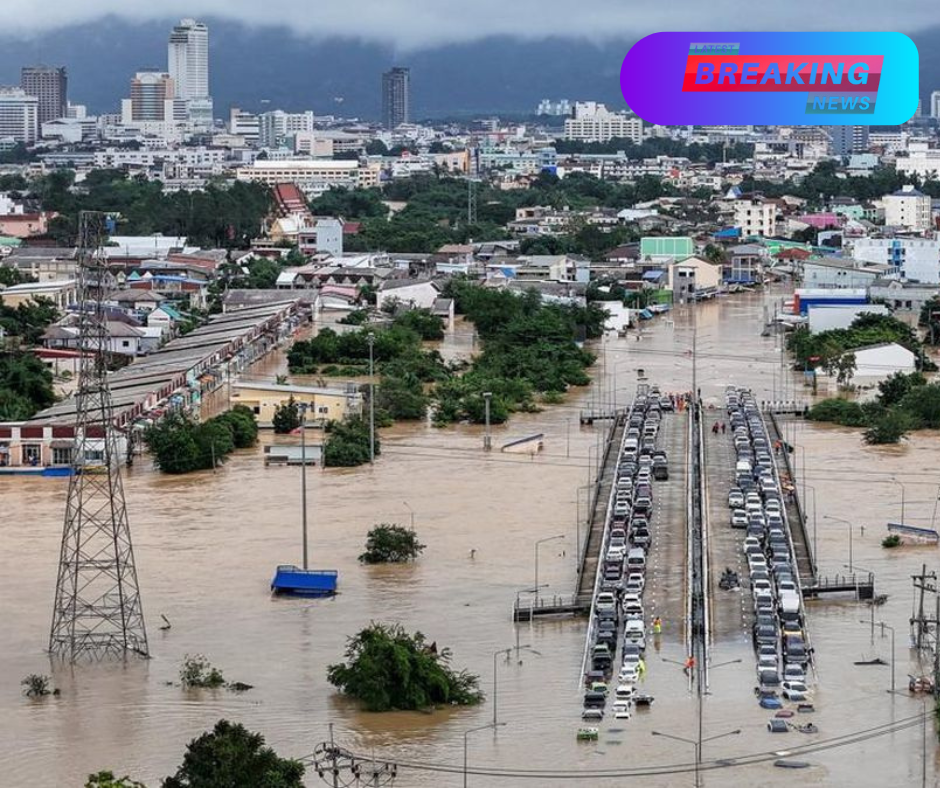Thailand Underwater: The Worst Flooding in 300 Years Paralyzes the Nation
Severe flooding in Thailand is gripping global attention after the country was struck by the heaviest rainfall recorded in over 300 years. Entire provinces are submerged, millions of residents have been forced to flee, and rescue teams continue evacuating stranded families from rooftops and highways that now resemble rivers. The historic rainfall has turned bustling urban centers into disaster zones, making the severe flooding in Thailand not only a national catastrophe but also a climate-wake-up call for Southeast Asia and beyond.
How the 300-Year Rainfall Event Triggered Catastrophic Floods
Meteorologists describe the torrential downpour as unprecedented, far surpassing historical climate data. In just 48 hours, rainfall levels exceeded seasonal averages by more than ten times. Rivers burst their banks, reservoirs couldn’t contain runoff, and drainage systems collapsed under pressure.
Experts link the scale of the storm to a combination of monsoon intensification, ocean-temperature shifts, and prolonged humidity buildup. Local weather agencies also note that warming sea surface temperatures may have acted like fuel feeding the storm system. Although heavy rains are common in Thai monsoon seasons, the magnitude of this event broke every known meteorological benchmark.
Provinces Hit Hardest and What Conditions Look Like on the Ground
The most severe impacts are being reported across central and northern provinces. Cities known for tourism and agriculture are now flood basins.
Power outages spread quickly as electrical substations flooded. Authorities warned that recovery could take months, especially for rural districts dependent on crop fields now rotting below rising water.
Economic Shockwaves: Agriculture, Tourism, and Infrastructure Collapse
Thailand’s economy faces heavy pressure as the disaster disrupts daily life. Rice fields — a major export commodity — are underwater. Tourism-driven regions have seen airports suspend operations, and thousands of foreign travelers remain stranded. Roads, rail lines, and bridges require reconstruction before logistics can recover, slowing product distribution nationwide.
Economists fear long-term consequences. Reconstruction costs are projected to skyrocket while food shortages and transport delays could increase inflation. The damage extends beyond property: livelihoods washed away with the floodwaters.
Government Action, International Aid, and Emergency Response
The Thai government issued nationwide emergency alerts and deployed military units for evacuation. Boats and aircraft are rerouting supplies to critical zones, while thousands of volunteers distribute food, blankets, and medical kits.
Several countries have offered assistance through equipment and humanitarian support. Aid organizations are building temporary shelters and providing water-filtration units to reduce disease risk. Despite these efforts, officials warn that continued rainfall could worsen conditions, making prevention, not just recovery, the next urgent priority.
Climate Warning: Could This Disaster Happen Again?
Scientists emphasize that extreme flood events like this could become more frequent. The severe flooding in Thailand underscores the vulnerability of coastal and river-dense regions in a changing climate.
With communities displaced and infrastructure destroyed, this event may redefine Thailand’s climate policy going forward.



